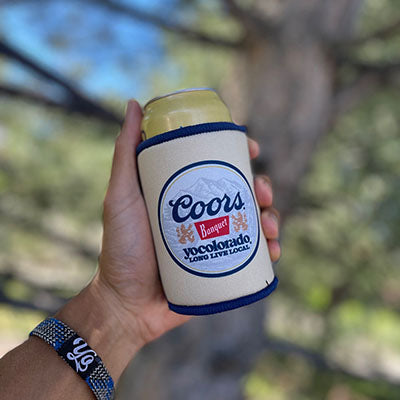Whether you’re eyeballing them from windswept rimrock above, knee-buckling your way down their walls via crazy switchbacks, or penetrating their heart on thunderous whitewater, America’s canyons and gorges account for some of the country’s standout scenery.
Now, the U.S. claims an abundance of spectacular gulfs, and we don’t have anywhere near the room to pay them all their due respects. (Hell, we could restrict our focus to the Colorado Plateau alone, and easily come up with a full roster of some of the world’s most breathtaking canyons.) And let’s keep in mind that even those corners of the country that lack huge gorges still have lovely little mini-canyons well worth exploring: from Parfrey’s Glen in Wisconsin’s Baraboo Hills and the Little Grand Canyon in Illinois’s Shawnee Hills to the biodiverse “steephead ravines” of Northwest Florida’s Apalachicola River drainage.
Here, though, we’re focusing on some of the big guys, from the Appalachians out to the Sierra Nevada. Read on for a look at some magnificently torn-open country and some of the gnarliest canyons on the continent.
1. Breaks Canyon (Kentucky/Virginia)

Perhaps the deepest gorge in the East, Breaks Canyon on the Kentucky-Virginia line marks the Russell Fork of the Big Sandy River’s five-mile buzzsaw traverse of Pine Mountain in the Appalachians. At points the lushly wooded sandstone chasm—“the Grand Canyon of the South”—reaches 1,650 feet deep. Breaks Interstate Park, jointly managed by both states in a unique arrangement, includes miles of hiking and mountain-biking trails. Kayakers, meanwhile, find a rodeo ride on the Russell Fork, which includes Class V rapids through the gorge.
2. Tennessee River Gorge (Tennessee)

The Tennessee River cut this great gorge—nicknamed, what do you know, “the Grand Canyon of Tennessee”—through Walden Ridge on the Cumberland Plateau, a mere stone’s throw from Chattanooga. Heavily forested slopes rise to a sharp rim of sandstone and conglomerate bluffs. Home to notorious rapids and shoals—the Suck, the Boiling Pot, the Skillet, and others—before it was dammed downstream in 1913, the Tennessee River squiggles some 26 miles through the gorge. Lands managed by the Tennessee River Gorge Trust offer endless hiking, trail-running, and mountain biking opportunities, while the Tennessee River Blueway makes a paddler’s paradise between Chickamauga and Nickajack dams.
3. Red River Gorge (Kentucky)

Spectacular sandstone formations—including perhaps the greatest concentration of rock arches outside the Colorado Plateau—distinguish the mighty Red River Gorge, cleft through the Cumberland Plateau’s Pottsville Escarpment. Besides all the keyholes, the defile—centerpiece of the Daniel Boone National Forest’s Red River Gorge Geological Area—boasts extensive clifflines that make it one of the preeminent rock-climbing areas in the country. The Sheltowee Trace National Recreation Trail, named after the Shawnee honorific for Daniel Boone, passes through the Red River Gorge in the Clifty Wilderness and Natural Bridge State Resort Park.
4. Tallulah Gorge (Georgia)

Two miles long and close to 1,000 feet deep, the Tallulah Gorge rends the Tallulah Dome in the Blue Ridge. During the spring and autumn controlled water releases from the upstream dam, the Tallulah River’s headlong course through the gorge once again forms the historic cascades collectively called Tallulah Falls, the tallest of which exceeds 90 feet. (Given the whitewater, release weekends are popular among kayakers and rafters, to say the least.) The Hurricane Falls Trail, meanwhile, offers a nice overview traverse of the defile—including a walk across its showstopper of a suspension bridge.
5. Gulf Hagas (Maine)

Maine’s “Grand Canyon” is Gulf Hagas, a 400-foot-deep slate gorge along the West Branch Pleasant River. It’s a defining landmark of the Appalachian Trail’s 100 Mile Wilderness stretch. Great waterfalls stagger the river’s descent through the Gulf, while near at hand is the grove of old-growth eastern white pine forest called the Hermitage. Keep an eye out for moose…
6. Palo Duro Canyon (Texas)

Palo Duro Canyon southeast of Amarillo is the best-known landform of the so-called Caprock Canyonlands, where the drainages of the Red, Brazos, and Colorado rivers incise the eastern escarpment of the Llano Estacado (“Staked Plains”) of the High Plains. Carved out of shale, sandstone, mudstone, and other sedimentary rock by the headwaters of the Prairie Dog Town Fork of the Red River, Palo Duro’s a multicolored gulch more than 60 miles long, six miles wide, and 800 feet deep in places. It comes studded with hoodoos and pinnacles, including the iconic castellated prong called the Lighthouse. Today, Palo Duro Canyon State Park’s a place to camp, hike, bike, and ogle free-roaming Texas longhorns, but there’s some sobering history haunting this place, too: Palo Duro Canyon was among the last refuges for bison on the Southern Great Plains, and the site of an infamous 1874 attack by the U.S. Calvary on a large group of Comanches, Kiowa, and Cheyenne.
7. The Grand Canyon (Arizona)

What more can we say about this royal abyss in the heart of the Colorado Plateau, a monstrous geological wound along the Colorado River between the mouth of the Little Colorado and the Grand Wash Cliffs? No, the Grand Canyon isn’t the biggest canyon in the world, but you can make a good argument that it’s the most awe-inspiring: a 277-mile-long, 18-mile-wide, mile-plus-deep gulf exposing a few billion years of geological history in its fiery depths and brandishing otherworldly buttes and spires with names like the Cheops Pyramid and Vishnu Temple. However way you do it—lucking out with a river permit, backpacking the Tonto Trail, going the mule-back route—the Grand Canyon’s the sort of place you make a pilgrimage to.
8. Cataract Canyon (Utah)

How can we leave the ravaged slickrock outback of Canyonlands National Park off this list? The Green and Colorado rivers, shouldered by Stillwater and Meander canyons respectively, come together placidly below the White Rim at the steep-cut Confluence in the heart of the park. After a short flatwater mosey below the Confluence, the Colorado then boils, churns, and surges its way through ferocious Cataract Canyon with its 14-mile lineup of mega rapids. This legendary wildwater—momentous during spring runoff—is partly churned up by all the boulders that have careened into the current off the canyon walls.
9. Zion Canyon (Utah)

The North Fork Virgin River is still actively cutting sheer-walled Zion Canyon, which runs from the Narrows south to the North Fork’s mouth in the Virgin River mainstem and reaches 3,000 feet deep in places. The tight slot of the Narrows, where the river carves into Navajo Sandstone, is only a few feet wide but 2,000 feet high; at the mighty Temple of Sinawava, the canyon deepens and broadens as the North Fork bites through the soft shale of the Kayenta Formation. Hanging tributary valleys toss waterfalls into the gorge, studded with cliff-belted domes such as the Great White Throne. Hikers, climbers, whitewater paddlers, and canyoneering enthusiasts: eat your hearts out.
10. Hells Canyon (Oregon/Idaho)

By some measures, Hells Canyon ranks as the deepest river gorge in North America. From the gnarled peaks of Idaho’s Seven Devils Mountains to the whitewater of the Snake River, this wild chasm—partly scoured out by the massive Ice Age floods of Glacial Lake Bonneville—reaches roughly 8,000 feet deep. Compared with the flashy sedimentary hues of Colorado Plateau defiles, Hells Canyon is drabber—its bunchgrasses green in winter and spring, brown in summer and fall—but still breathtaking with its basalt-striped knife ridges. Rafting is the best-known means of penetrating Hells Canyon, while hikers up for the extreme terrain and demanding climate have raw wilderness at their disposal.
11. Black Canyon of the Gunnison (Colorado)

The 48-mile-long Black Canyon of the Gunnison is well-named: Due to the gorge’s sheerness and depth, its innards are shadowy indeed. Exposing austere gneiss and schist more than a billion years old, the Black Canyon reaches 2,722 feet deep at Warner Point, spans a mere 40 feet across in the Narrows, and claims the greatest cliff face in Colorado in the Painted Wall. In Black Canyon of the Gunnison National Park, gape at the dark gash from established rim-level trails or brave poison-ivy and drop-offs on rough descents; downstream of the national park, the somewhat shallower canyon reach of the Gunnison Gorge National Conservation Area draws rafters and kayakers up for the challenge of heavy-duty rapids.
12. Kings Canyon (California)

Numerous deep gorges cut the west slope of the southern Sierra Nevada, and one of them, Kings Canyon, rivals Hells Canyon in depth: Where the South and Middle forks of the Kings River meet, the north wall of the canyon—if taken to be the summit of Spanish Peak—looms upwards of 8,000 feet above. A 40-odd-mile tongue of glacial ice carved the upper portions of Kings Canyon into a U-shaped glen; downstream of the ice’s reach, the purely river-excavated gorge becomes a V-shaped slash. Upper Kings Canyon lies in Kings Canyon National Park, with the deepest stretch of the gorge downstream outside the park.
13. Kern Canyon (California)

Across the Kings-Kern Divide from Kings Canyon, the remote upper reaches of the Kern River mark another noble gorge in the Sequoia National Park backcountry. Kern Canyon, which separates the Great Western Divide from the main Sierra Crest, exceeds 6,000 feet deep. The world-class High Sierra Trail strikes right up the floor of Kern Canyon—and, just for good measure, puts you within reach (via the John Muir Trail) of the summit of Mount Whitney.
Ah, so many more awesome chasms we could nod to—from Oak Creek Canyon in Arizona’s Mogollon Rim to the Owyhee in the Oregon outback, from the Grand Canyon of the Yellowstone to Cloudland Canyon in Georgia’s Cumberland Plateau, etc. What’s your vote for the most impressive canyon in the U.S.—or, at least, your personal favorite for tromping around in?
Written by Ethan Shaw for RootsRated and legally licensed through the Matcha publisher network. Please direct all licensing questions to legal@getmatcha.com.







2 comments
Leave a comment
This site is protected by hCaptcha and the hCaptcha Privacy Policy and Terms of Service apply.